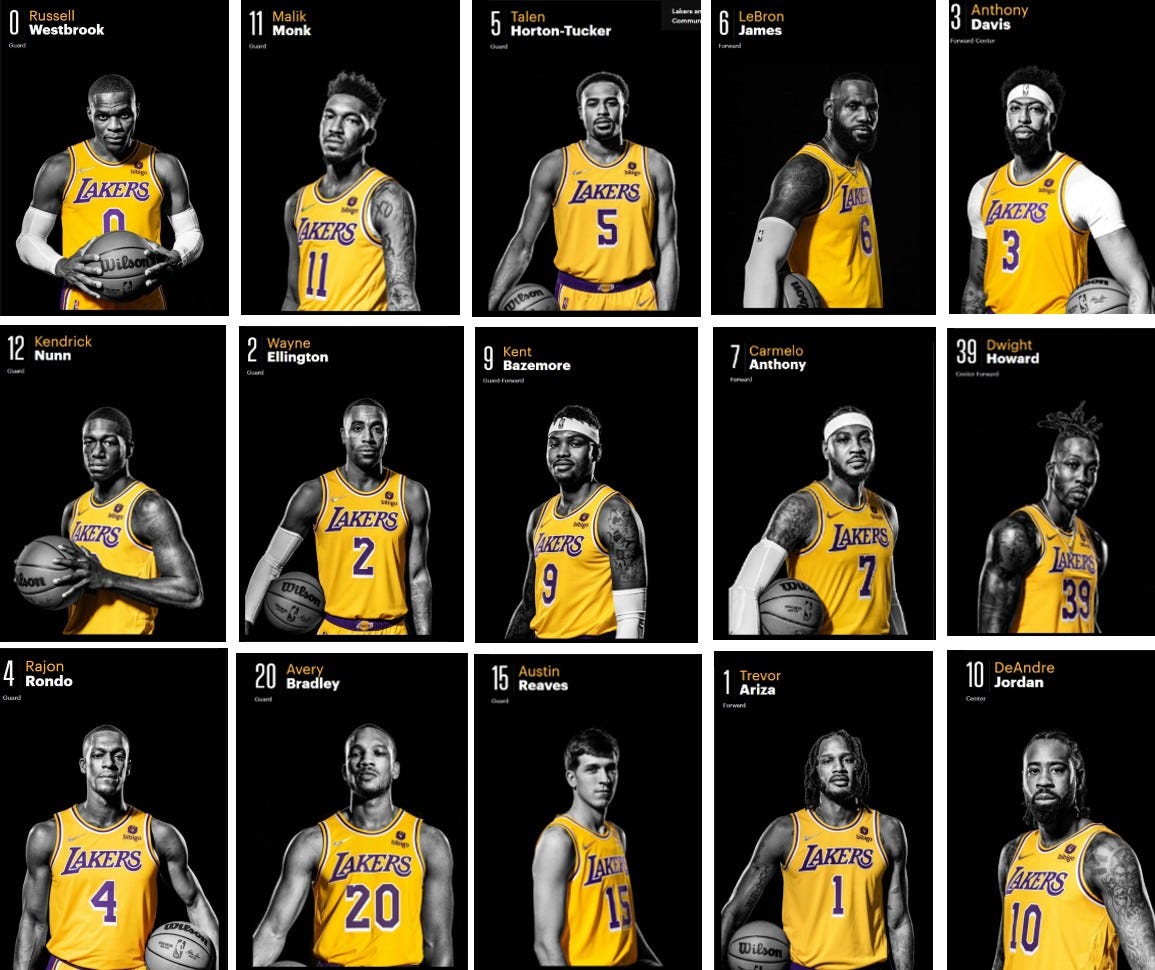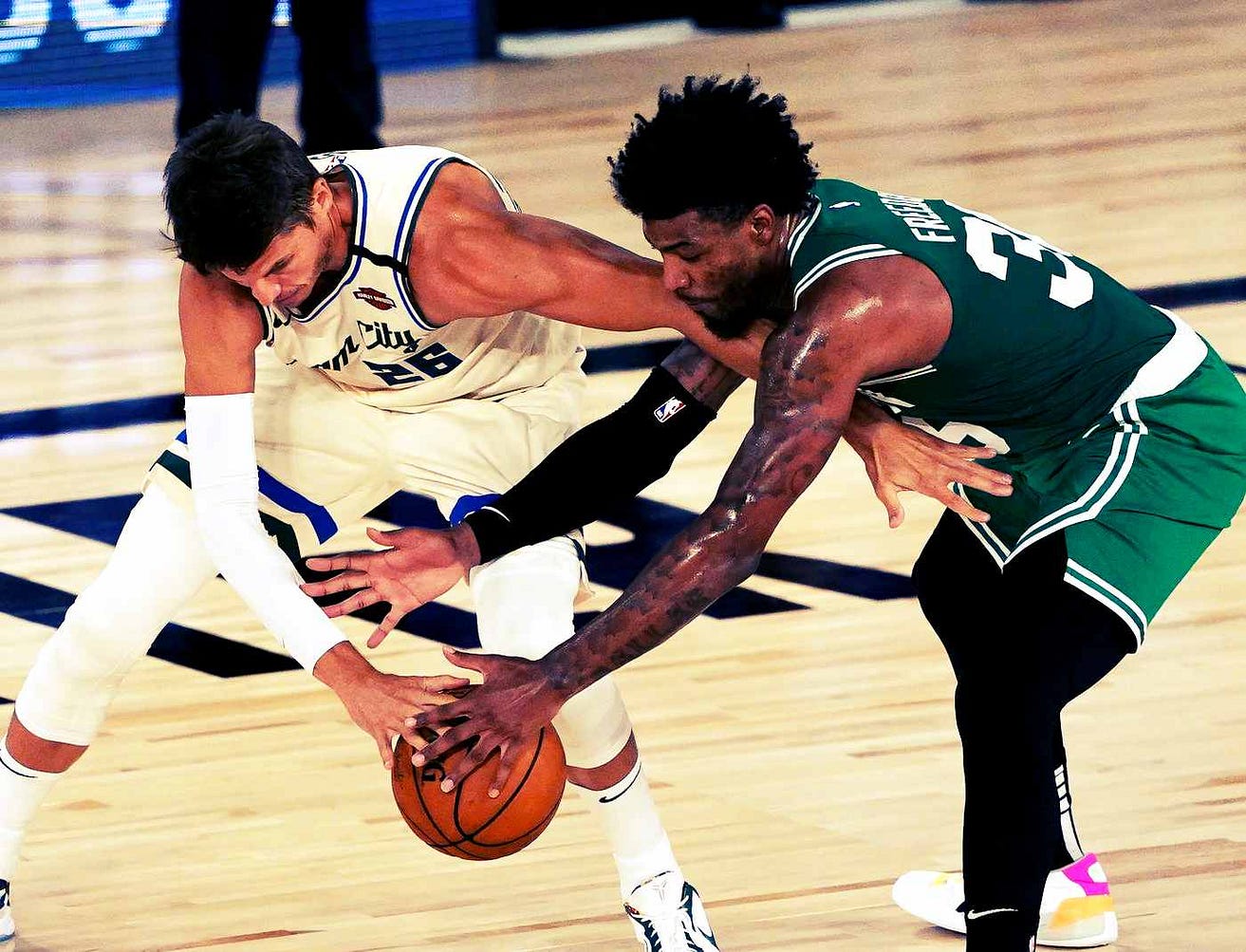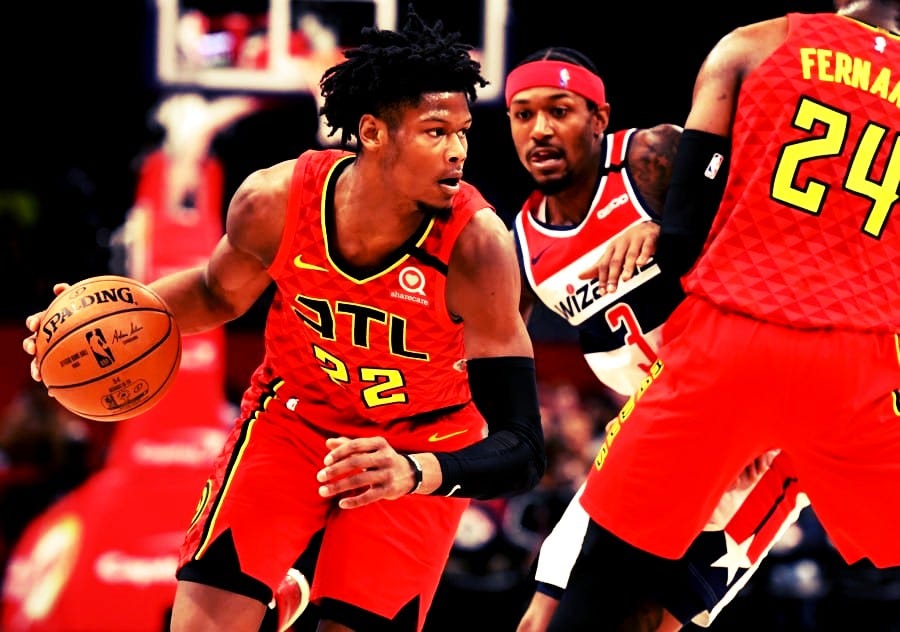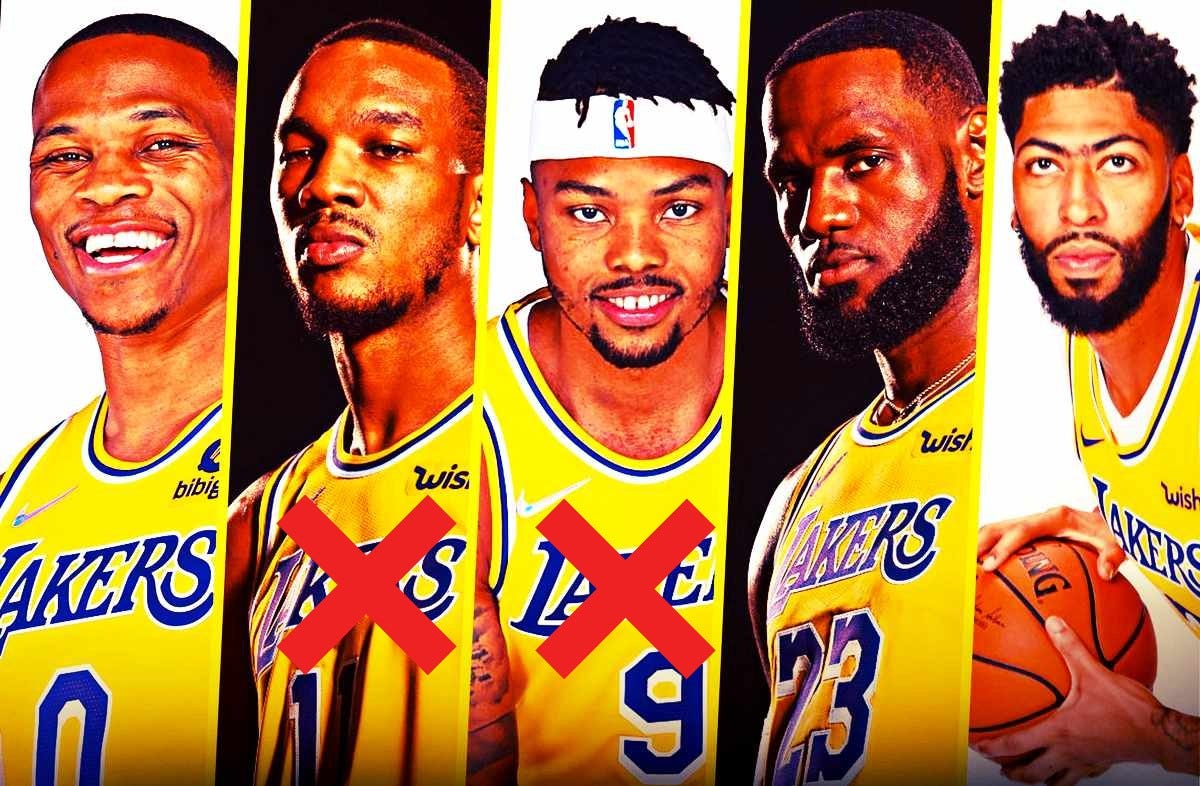The Lakers refused to trade him for Kyle Lowry and re-signed him rather than Alex Caruso but Talen Horton-Tucker has emerged as the backcourt candidate best suited to pair with Russell Westbrook in the starting lineup.
The Lakers signed Ellington, Monk, Nunn, Bradley, and Bazemore looking for a 3&D backcourt mate for Russell Westbrook only to discover they already had the player they needed in 20-year old Talen Horton-Tucker. While the sample size is just three games without LeBron James, THT appears to have hit the ground running, unleashing a remarkable third year breakout after missing the start of the season due to thumb surgery.
In his first three games of the season, Horton-Tucker has averaged 23.3 points, 7.3 rebounds, and 2.0 assists in 34.3 minutes per game with solid 49.0/40.0/100% shooting splits and the third best net rating on the team. Talen has not only earned a major spot in the rotation but also has a shot to win starting shooting guard if he continues to play near this level. It’s totally intoxicating to think about the impact this version of THT could have.
Talen will have to prove his 3-point shooting is for real but his confidence is high and he trusts the work he’s put in to improve his mechanics and muscle memory and is not at all surprised that he has gotten off to a great start.
Could Westbrook and Horton-Tucker Be Lakers’ Backcourt of the Future?

Once the Lakers traded for Westbrook, Talen Horton-Tucker went from a likely starter to an unlikely starter as Russ, LeBron, and AD need to be surrounded by proven 3-point shooters, which as a career 28.5% THT is not.
Ironically, the Westbrook trade could have undermined THT’s career with the Lakers. Before the trade, talk was of Talen possibly starting this season. Once the trade was made, the Lakers aggressively signed multiple shooters. Everything suddenly changed for Talen and starting seemed like a long shot. Talk was he and Russ were both were poor shooting, paint-seeking, rim-attacking, ball-dominant guards who couldn’t win playing together.
While three games is not enough to make a reliable judgement, the elite play of Horton-Tucker over the last three games has been extremely encouraging, especially the solid 40% completion rate from deep on 6.7 threes per game. That’s the high volume, high percentage 3-point shooting the Lakers need next to Westbrook. THT’s Kawhi-sized hands, 7′ 1″ wingspan, low center of gravity, and physicality at both ends make him a perfect fit next to Russ.
In the three games played with THT, Russ averaged 19.3 points, 7.0 rebounds, and 10.0 assists in 33.7 minutes per game with 43.5/31.5/81.3% shooting splits. 10 assists and 4.7 turnovers per game is mostly Good Russ. Over the three games, Russ and THT combined to average 42.6 points, 14.3 rebounds, and 12 assists. They shot 36.1% on 12 threes per game and were two of just three Lakers players with positive plus/minus and net ratings.
While Russ and Talen won’t get the same touches and opportunities when LeBron returns, they could be one of those unexpected outside-the-box pairings that could become a Lakers’ championship staple at both ends.
What does a Westbrook/Horton-Tucker Backcourt Mean for the Lakers?

The Westbrook/Horton-Tucker Lakers backcourt sets the stage for the Lakers to recreate the physically dominant small ball lineup they used to win their 17th NBA championship over the Miami Heat in the bubble a year ago.
Rob Pelinka and Frank Vogel’s vision for this Lakers team is similar to the vision they had for the championship team except more offense. Basically, the Lakers want to physically dominate opponents with size and athleticism. Pairing the 6′ 4″ 234 lb Talen Horton-Tucker with the 6′ 4″ 200 lb Russell Westbrook gives the Lakers a more physical and athletic backcourt than this year’s Westbrook/Bradley backcourt or the KCP/Green bubble backcourt.
Of course, to make this work, Russ and Talen need to shoot better from deep than they did last year, when Westbrook shot 31.5% from three on 4.8 attempts per game and Horton-Tucker 28.2% on 2.9 attempts per game. That’s why the injuries have been so frustrating because they’ve prevented the player for whom the offensive and defensive schemes were created from playing. But LeBron is close to returning and Ariza not far behind.
Aside from pairing two alpha dog rim-attackers who can regularly contribute 20 points per game, Russ and THT bring an elite level of physicality on defense Ellington, Monk, Nunn, Bradley, Bazemore, or Reaves could not. With Westbrook at the one, Horton-Tucker at the two, James at the three, Ariza at the four, and Davis at the five, the Lakers would have five players with the athleticism and physicality to dominate their opposing counterpart.
Even the Lakers didn’t expect Talen Horton-Tucker to have elevated his game to this level, although they obviously knew it was coming. Their big gamble to keep him instead of trading him may have just started paying off. What I love most about Horton-Tucker going off is the news has been lost in the articles by the gloating anti-Lakers media over the team’s early season struggles. They didn’t even notice yet that Talen Horton-Tucker has arrived.
Westbrook, Horton-Tucker, James, Ariza, and Davis would be a bully ball starting lineup that could play the style of rotating defense the Lakers’ championship team did but with a lot more offensive firepower.











